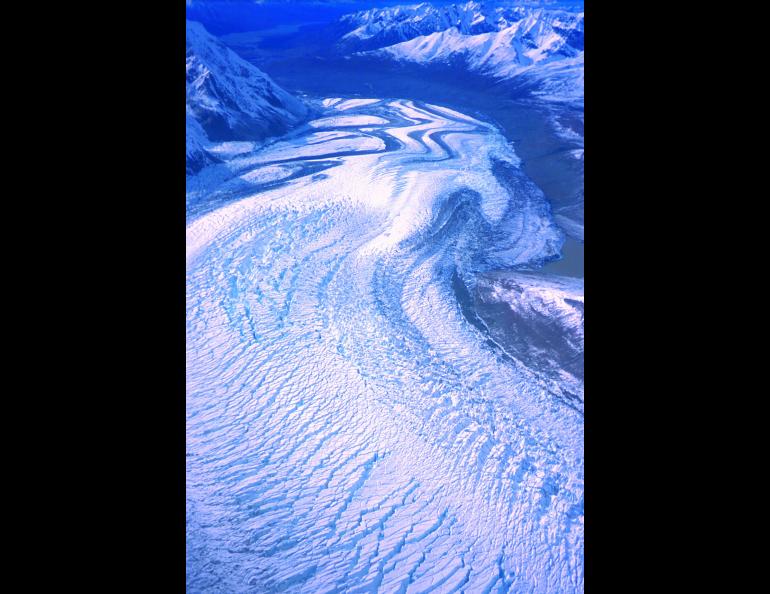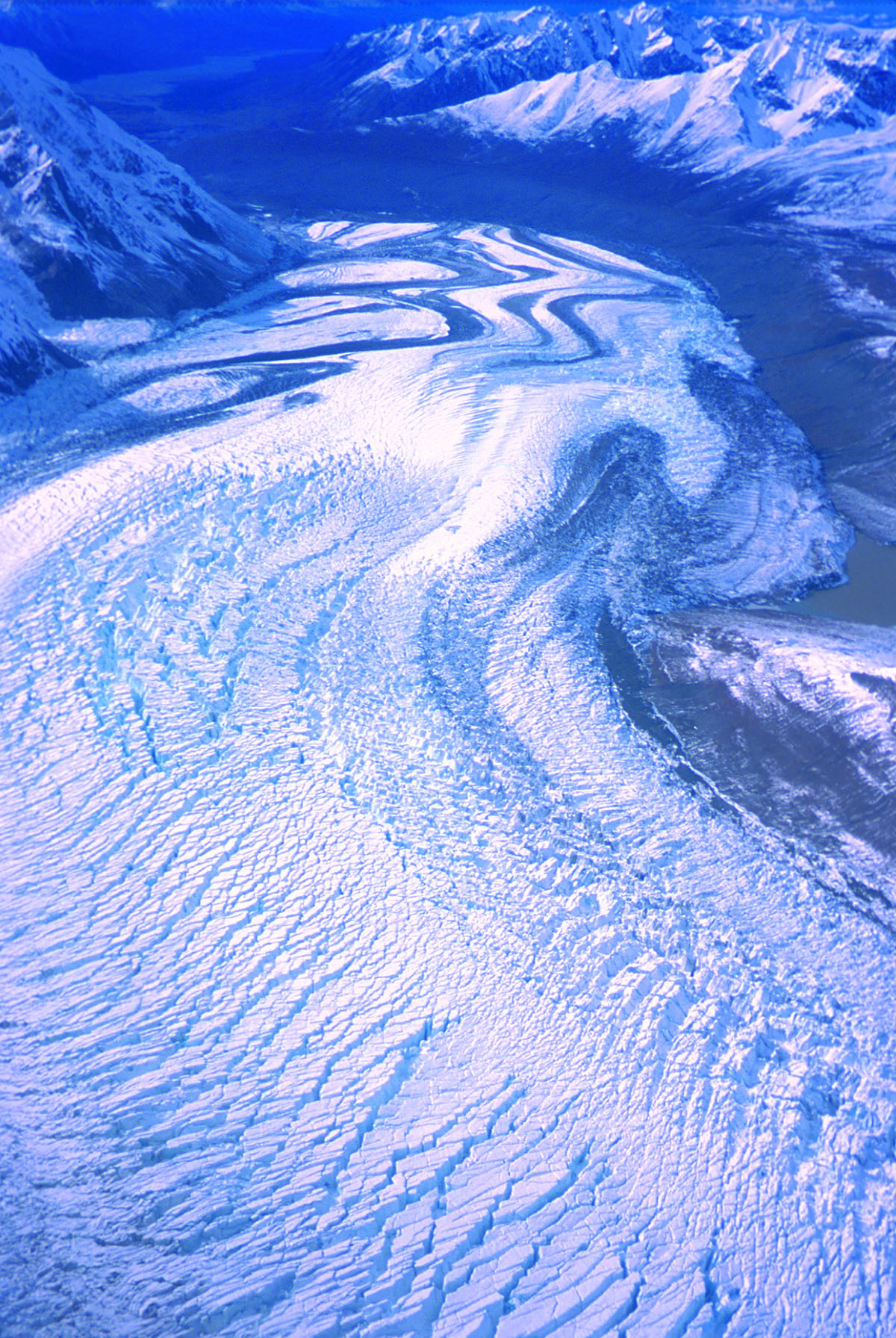
Yanert Glacier is on the Move
When Geophysical Institute researchers traversed the Alaska Range on skis last spring, they didn't know they were blazing a trail no one could follow. After their trip, the skiers' pathway out of the mountains, Yanert Glacier, rushed forward and blossomed with crevasses. Glaciologists say Yanert surged, which means it moved after years of relative sloth.
Last spring, the skiers avoided cracks in the middle of the Yanert Glacier. Five years earlier, Geophysical Institute Glaciologist Keith Echelmeyer skied on the same glacier and saw no crevasses. A helicopter pilot based in Denali Park echoed the recent skiers' observations. While flying tourists over the glacier in the summer of 2000, he noticed the smooth face of the glacier was buckled and cracked.
Yanert is experiencing the complexion problems characteristic of surging glaciers, which differ from most glaciers in Alaska. After grinding along for decades, surging glaciers suddenly move with unexpected speed. For example, Yanert may have crept the length of a football field each year since its last surge in 1942, but during the present surge the glacier is covering the same distance every day, Echelmeyer said. Yanert Glacier, which is located about 35 miles east of the Parks Highway, is not threatening to become a roadblock, but another surging glacier made national headlines when it advanced toward an Alaska motorway.
In 1937, Black Rapids Glacier, south of Delta Junction in the Alaska Range, was the subject of a Time magazine story: "The Black Rapids Glacier, long dying in its valley 125 miles south of Fairbanks, had come to life. Its mile-and-a-quarter face was shoving toward the Delta River and the Richardson Highway (sole motor road from Fairbanks to the coast), rearing ice crests to 500 feet, breaking off great land icebergs which tumbled thunderously ahead onto the mossy valley floor," the Time author wrote.
Black Rapids stopped moving in 1937 before it devoured the Richardson Highway, but geologic evidence shows that it crossed the Delta River valley hundreds of years ago, damming the Delta River and creating a giant lake.
Glaciers with the surging nature of Black Rapids and Yanert are a vast minority amid the thousands of glaciers in Alaska. Why does one glacier surge while another does not?
Surging glaciers all share the same pattern-the accumulation of vast amounts of ice and snow high in the mountains followed by the sudden downslope movement of ice. After one or two years of rapid advance, surging glaciers stop dead within a day or two. The glaciers then creep along for decades, until ice and snow recharge the higher sections. Then, at a certain breaking point, the glaciers surge again.
What triggers a glacier's surge? During a drilling program on Black Rapids a few years ago, Echelmeyer and other Geophysical Institute researchers found a layer of rock and silt, called till, beneath the glacier. When mixed with water, this till turns into mud, which acts as a lubricant. The incredible weight of ice in the upper levels of the glacier might press down on the till, creating pinch points behind which water ponds up. The water floats the glacier until it slides on the muddy till, causing a surge. The abrupt end to a surge may occur because a dam at the pinch-point breaks. The dam releases a large pulse of water and sediment to a glacial stream, bringing the glacier to a standstill, an event many glaciologists have observed at the end of surges.
After flying above Yanert Glacier last August to check its movement, Echelmeyer noticed that Yanert appeared to stop surging in mid-summer. He said the glacier may start surging again in the winter of 2001, or it might have returned to a quiet phase, during which it will snail along for another 60 years or so. Whatever Yanert's mood, this much is certain: it's not the place to ski during spring 2001.





